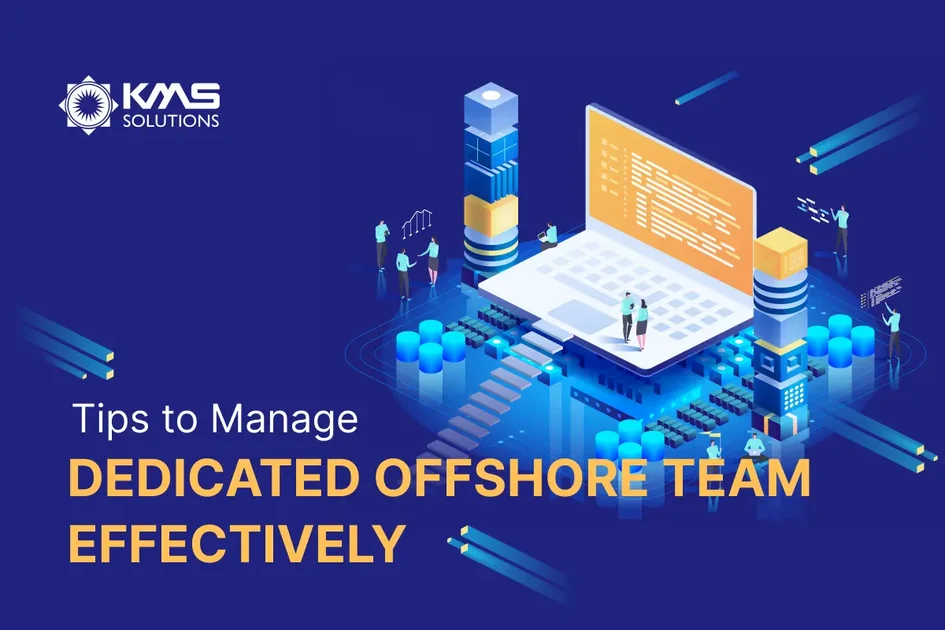Since software development is time-consuming and expensive, outsourcing the IT project to offshore teams could be a potential alternative. It enables businesses to remain agile in today’s competitive tech industry by completely handing over product development to oversea teams, where their salaries are much more affordable.
However, it’s not all smooth sailing when collaborating with remote development teams, especially when the two teams are in different time zone. This article will cover the common obstacles and key tips to overcome these hurdles when working with offshore dedicated teams to ensure business success.
Common Challenges of Managing a Dedicated Offshore Team
In fact, managing an offshore team is not as straightforward as overseeing an internal team. When dealing with an offshore partner, it is not possible to simply walk over and monitor them the same way you could in a physical office.
Besides all of the benefits that offshoring software can provide, managing an oversea workforce comes with its own set of obstacles that businesses should be aware of.
1. Cultural Differences
Culture clashes are inevitable, especially when working with individuals who grew up in distinct environments and possessed different perspectives than you. Hence, it is essential to recognise cultural boundaries right from the outset. From basic etiquette norms to professional ethics, even the smallest cultural differences can severely impact your workflow.
2. Poor Communication
Whether overseeing the onshore or offshore team, communication is a typical issue. When communication is unclear or inconsistent, people may misunderstand business goals, leading to mistakes, delays, or conflicts in the software development project. Poor communication can also create a lack of transparency and trust, making it harder for members to collaborate effectively and share their knowledge and skills.
3. Language Barriers
Hiring offshore developers who are not proficient in English or your language can further exacerbate communication issues. At this time, the collaboration between teams might become more challenging, and misconceptions can easily arise. The onboarding or knowledge transfer processes are also affected when the offshore team cannot understand what you have tried to explain.
4. Scheduling Difficulty
Almost certainly, your offshore development centre is located on the opposite side of the globe, and in a different time zone. Even though some teams may willingly change their working hours to fit your schedule, problems may still arise.
For instance, your offshore crew may have their own set of holidays and traditions that are separate from yours. There are days when you need their assistance to meet the timeline, yet they are celebrating a national holiday. Additionally, each culture has its own time perspective, leading to missed appointments, project delays or grown conflicts.
5. Loose Progress Tracking
Progress measurement can be based on consistency in both schedules and evaluation criteria. If the progress tracking cannot be done regularly, offshore dedicated team members may fail to meet the pre-determined deadlines and standards. Moreover, the quality and uniformity of outputs may suffer and severally damage the company branding.
Best Practices for Managing Dedicated Offshore Teams
Contracting with an overseas software team is considered an excellent way to both reduce costs and accelerate the development process. Although offshore team management can be a daunting task, you can make it a breeze with the appropriate tips. Here are some best practices to help you work with offshore developers effectively.
1. Define a Strategic Vision
When dealing with dedicated offshore teams, it is typical for corporations to make the mistake of simply assigning urgent tasks without explaining the objective or the whole project’s picture. For example, team members who are not instructed clearly about the goals of the project may be disengaged from the work they are working on, resulting in poor performance.
Therefore, no matter which development stage they’re working on, your offshore IT engineers need to understand the penultimate goal as well as the project’s vision and direction, which are:
- Scope of work (SoW), including milestones, priorities, expected outcomes and deliverable timelines.
- Additionally, you should also provide the offshore development with the release details and sprint planning to help them understand and follow the upcoming tasks.
Defining a clear product vision will instil a sense of job security in your internal team and equip them with an idea of how the product will look like.
2. Set a Clear Product Roadmap
To ensure success with offshore development centres, you need to divide your project by time intervals for better and more effortless task management. Creating a product development roadmap will provide you with a high-level view of what’s critical to accomplish the pre-determined product vision.
Besides, you can split the development process into short iterations called sprints, which include specific priorities, together with the SoW of each team member and the timeline, respectively. The sprint can assist you and your dedicated offshore team continually in tracking the progress and swiftly making modifications to align with the roadmap’s direction.
Having a straightforward roadmap with appropriately distributed sprints goes a long way in managing offshore development teams efficiently and allowing them to work comfortably.
3. Develop a Proper Communication Strategy for an Offshore Team
It could be easy for offshore teams to be left behind in the dark about numerous things. In an office-based scenario, people can have at least some sense of what work is progressing, but this is seldom the case when operating remotely.
Since all interaction occurs electronically through voice or video calls, you should consider the communication tools properly. Some communication apps that will likely dominate in 2023 and beyond are:
- Google Meet and Zoom for video conferencing.
- Whatsapp, Skype, and Slack for direct messages and voice/video calls.
- Jira and Trello for task tracking and reporting.
Furthermore, to minimise the possibility of language barriers, it’s worth considering simplifying your communication strategy for an offshore team. This means you should avoid metaphors, use basic vocabulary and be straight to the point in daily work. Respecting other cultural practices and beliefs and conducting regular sharings between teams can also help you reduce the conflicts that might arise due to cultural differences.
4. Employ Agile Approaches
The Agile development methodology is generally recognised as an effective tool for managing offshore development teams. This method provides a transparent framework that fosters iterative and incremental methods and adapts to any degree of the market situation or feedback.
Since quality and efficiency are given top priority in the Agile approach, employing this technique in conjunction with your team management system to boost their production.
Moreover, Agile methodology helps prioritise tasks based on business value and customer requirements. This ensures that the offshore team is working on the most critical tasks, which is essential when working with time zone differences and limited communication.
5. Operate with Overlap Work Schedule
Real-time communication can be a challenge when working with offshore teams in different time zones. Overlapping work hours for both time zones can offer more time devoted to investigating crucial issues together. By making necessary adjustments to the schedule, you can strategically organize and plan the workflow to minimise any unexpected holdups.
For example, if you’re in Australia and your dedicated offshore team is in Vietnam, that’s 4 hours ahead. You can ask the offshore team to work 3-4 hours sooner in the morning some days for special meetings, team huddles, or anything that requires you to collaborate with the other teams actively.
By doing this, you can perhaps reduce the issue of working across even significantly different time zones and ensure smooth collaboration for development success.
6. Effective Onboarding and Knowledge Transfer
Even the most talented programmers require time to learn and become familiar with new technologies and products. Thus, concentrating on onboarding and the knowledge transfer process can help manage oversea teams effectively by ensuring that they understand the project’s objectives and expectations, as well as the organization’s culture and work processes. This process includes providing training on the company’s software development practices, tech stacks, and methodologies, as well as sharing relevant documentation and knowledge resources.
Through effective onboarding and knowledge transfer, offshore team members can quickly become productive and integrate into the team. This can also reduce the likelihood of misunderstandings, delays, and mistakes that can occur when team members are not familiar with the project requirements or work processes.
7. Avoid putting overwhelming requirements
Although striving for perfection is a good thing; however, too much pressure and forced motivation may lead to unexpected results.
A Forbes article indicated that pressure could boost an employee’s productivity, but excessive can cause stress and anxiety, which can reduce performance and quality of their work
While establishing goals and timelines, organisations should consider the following:
- How difficult do you find this task to be?
- Can this deadline be met?
- To what extent do you believe your worker is capable of completing this project?
Conclusion
In this modern tech era, companies need to stay ahead. Thus, it’s worth considering finding a robust offshore development team that has sufficient skill and experience to handle tasks. However, the process of managing offshore development teams is not easy since there may be various challenges, such as time zone differences, lack of physical interactions, inefficient communication, etc.
The offshore development best practices mentioned in this article are based on the experience of KMS Solutions when working with many global clients to ensure seamless product development and rapid market time. Our offshore team is particularly familiar with working with different clients and is easily adaptive to their development process. Contact us if you’re looking for a dedicated overseas team.








